
Title: The role of development organizations in fighting hunger and malnutrition during the Covid-19 pandemic
Invited Presentation
Gabriela Pen Nasser
University of Freiburg, Germany
Abstract
The global Covid-19 pandemic has demonstrated to have an effect far beyond the current cases and deaths worldwide, with aggravating levels of food insecurity and malnutrition. It has been estimated that as a result of the pandemic, 265 million people are at risk of hunger and lack of nutritious food and children are a particularly vulnerable group at risk of severe malnutrition. School closures across the globe have kept more than 350 million children with irregular feeding. Brazil, the largest country in Latin America, has seen an uncontrollable outbreak of cases and deaths by Covid-19 in early 2021. The development of the pandemic in the country is also exposing a crisis scenario of vulnerabilities and dismantling of social policies and programs implemented in the past years. The lack, or inefficiency, of the current government and governmental institutions call for local actions, which are primarily carried out by civil society organizations. This presentation will briefly outline the role of local organizations in combating hunger and food insecurity, in the context of the pandemic in Brazil.
Biography
Gabriela is a Social Scientist and Master of Science in Global Urban Health from the University of Freiburg. For over 20 years, she has been working in the development sector in Brazil, as Institutional Director of Instituto Melhores Dias, with social programs focused on health prevention and community development. Her areas of expertise are prevention of childhood obesity, non-communicable diseases, food security and health promotion and education. She is involved in multidisciplinary projects in public health and sustainable development.

Title: A Latent Class Analysis of Psychosocial Functioning and Chronic Diseases among Indian adults
Invited Presentation
Dr. Apurva Barve
University of California, USA.
Abstract
Introduction: Following an epidemiological transition, chronic diseases have become the leading causes of mortality and disability in India. While prior research indicates that individuals’ overall psychosocial functioning (i.e., functioning across personal and social domains; PF) is related to the development, prognosis, and consequences of chronic diseases, few have assessed the multidimensional nature of PF and its physical health effects among Indian populations. The purpose of this study was to evaluate the relationships between PF and five chronic diseases, including angina, hypertension, arthritis, chronic lung disorder, asthma, and chronic multimorbidity (2+ chronic diseases) among women in India.
Method: Data (N = 6,758 women) were drawn from the World Health Organization’s Longitudinal Study of Global Aging and Adult Health Wave-1. A latent class analysis approach was used to identify distinct classes of PF using seven self-reported indicators (sleep, cognition, affect, depression, quality of life, social connectedness, and interpersonal relationship). Next, six regression models were conducted women to evaluate whether membership in different PF latent classes conferred a distinct risk of chronic disease diagnoses and multimorbidity.
Results: Four latent classes of PF for women (latent classes characterized by 1-Low PF, 2- High Cognitive Difficulties, 3-High Sleep and Affect Difficulties, and 4-High PF) were identified. Overall, the latent classes characterized by decreased PF were associated with greater odds of a chronic disease diagnosis. However, there were no significant associations between PF and hypertension among women. Decreased PF was also associated with greater odds of living with chronic multimorbidity.
Discussion: Using a person-centered approach to identify multidimensional typologies of PF, the present study represents some of the first nationally representative research to demonstrate the link between poor PF and chronic conditions among women in India. Results suggest that a focus on patients’ psychosocial and behavioral functioning during routine primary care and chronic condition visits would address some of the psychosocial impacts of chronic diseases and create an impetus for patient behavioral change.
Biography
Dr. Apurva Barve Ph.D., MA, is a social scientist and a public health researcher. Dr. Barve’s research focuses on investigating the relationship between mental health and physical health among Southeast Asian Indian populations. She has extensive research experience in studying vulnerable and marginalized populations to advance public health efforts in disease prevention and health promotion. Her research also evaluates the social, interpersonal, and structural determinants of cancer prevention and health promotion among Indian people living with HIV. Currently, she works as a researcher on a civic justice project at Hack for LA - a civic-tech non-profit. Her research contributes toward building tools to assist Californians with criminal records accomplish record clearance, expungement, or reduction, and subsequently a second chance as a part of society

Title: COVID-19 Medical Communication - Lessons Identified
Keynote Presentation
Prof. Rostislav Kostadinov
Medical University of Plovdiv, Bulgaria.
Abstract
Introduction: For years and a half-world is living under the threat of coronavirus. COVID-19 pandemic has a devastating impact on healthcare systems, economics, social life, and interpersonal relationships, thus affecting both the physical and psychological health of the single citizen and the societies as a whole. It is well known that in a crisis event one of the most important tools for achieving an adequate and efficient response to the challenges is properly organized, meaningful and comprehensive communication. Linking the decision-makers, operators, and population at risk, communication is of utmost importance, the core element, for the management and eradication of the crisis.
The aim of the study is to analyze and present some of the shortfalls recorded in medical communication throughout the COVID-19 pandemic.
Materials and methods: The means of the descriptive and comparative methods are applied to analyses of the available records regarding the communication activities performed by the medical and governmental authorities in different countries.
Results and discussion: Performed analyses present clear evidence of a communication campaign full of contradictory statements, not well constructed and comprehensive for the ordinary citizen's explanations. The records are exposing plenty of instances where the communication errors have created tensions and social unrest among the population.
Based on the results of the study several main domains of the performed communication are highlighted as ambiguous and confusing for the population and could be plausible to be avoided into future biological crises and disasters.
Biography
Prof Colonel Rostislav Stefanov Kostadinov is Organizing and leading the educational process for Medical University of Plovdiv and Medical College of Plovdiv students. Delivering lectures, leading seminars and the students examine. Monitoring, organizing, and facilitating the International relations and Project activities of the Public Health Faculty academic staff. Organizing and leading Ph.D. and resident programs on Disaster Medicine and Disaster Medical Support at the Medical University of Plovdiv Planning, organizing, and managing courses for improvement of the population skills for healthy behavior in case of disasters and catastrophes. Leading and managing courses for disaster medical support (for medical professionals) and advanced medical training for search and rescue team members.

Title: Dr. Kenetra Young
Keynote Presentaion
Dr. Kenetra Young
Public Health/Infectious Disease Epidemiologist, Health Science/ Public Health Professor, USA.
Abstract
Vaccines are developed to protect society from contagious diseases that cause harm or death. Smallpox was a deadly and infectious disease that overwhelmed the world centuries ago. The morbidity and mortality rates for this disease were very high, and it was difficult to contain smallpox from transmission amongst people. Despite regular outbreaks throughout the world, society started gaining control of the disease once a vaccine was developed. With global public health efforts and collaboration, the eradication of the smallpox disease was achieved.
There are many other infectious diseases that impacted the world that vaccines have been beneficial in preventing. There have also been non-ethical medical practices and experiments that occurred globally that have negatively impacted people (i.e. Tuskegee Syphillis Experiment in the US and Nazi experiments in Germany). There are some people who know of the negative history and this impacts their personal decisions to receive vaccines today to prevent illnesses. It is important for people to consider the many lives that have been spared because of ethical scientific research that has developed life-changing vaccines.
As public health and infectious disease epidemiologist, I will discuss my perspective of vaccine hesitancy. This perception is derived from my front-line work during a Hepatitis A outbreak in 2017, and consultative work that I have done during the COVID-19 vaccine deployment.
Biography
Dr. Kenetra Young has nearly 20 years of experience in the healthcare industry. She has a Bachelor of Science in Medical Technology, Master of Business Administration specializing in Health Care Management, Master of Public Health specializing in Community Health, and a Doctorate of Public Health specializing in Epidemiology. She started off her career journey as a laboratory scientist in chemistry/toxicology and blood banking. She later transitioned into Infection Prevention and Control where she researched and prevented hospital acquired infections. Dr. Young has taught collegiate level health science courses such as pathophysiology for 14 years, and has been teaching on-line graduate level public health courses for 6 years. Dr. Young most recently worked as a Communicable Disease Program Manager for a local health department where she oversaw a team of epidemiologists and supported contact investigations for food borne illnesses and reportable diseases such as hepatitis. She was responsible for the design of evaluation protocols, data collection instruments and data management tools that was used for conducting epidemiologic investigations and disease surveillance. Dr. Young has obtained several FEMA certificates have been front line with responding to critical incidents and disasters within both the hospital and public health settings. She received the 2018 Hometown Hero Award from the State of Michigan for her leadership and guidance during the Hepatitis A Outbreak response efforts. In addition, she co-led COVID-19 response activities, onboarded, and trained numerous partners to respond appropriately and effectively during the pandemic

Title: Insecurities and Dogs: An Obstacle to the Eradication of Dracunculiasis
Keynote Presentaion
Dr Kalu Aja
Clinical Fellow, King George Hospital Ilford, UK.
Abstract
Dracunculiasis is a parasitic worm infection also known as Guinea Worm Disease (GWD). It is caused by a nematode called Dracunculus Medinensis. It belongs to a group of communicable diseases named Neglected Tropic Disease (NTD). Dracunculiasis is caused by drinking water contaminated with vector copepods (water fleas). Although the disease is not fatal, the sores caused by the emerging worm in the lower limb can become secondarily infected and complications such as sepsis, tetanus can ensue. Also, the sores can cause abscess and cellulitis, leaving the individual incapacitated for weeks which extends beyond the emergence of the worm. Over the last three decades, the prevalence of Guinea worm disease has reduced drastically through cost-effective intervention provided by The Cater Center, WHO, UNICEF with the disease targeted for eradication. Some African countries like Nigeria, Ghana, South Africa, and Kenya being the most recent, have eliminated the disease. Guinea worm is still present in Chad, Cameroon, Mali, Ethiopia where political instability, social inequalities, and infection of dogs by the worm pose an increasing threat and obstacle to the elimination of the disease. Dracunculiasis represents a disease that can be eradicated without a drug or vaccine but with a cost-effective intervention that involves community efforts.
Biography
Dr Kalu Aja is a Medical Doctor with a Master of Public Health Degree from the University of Chester, United Kingdom. He worked with the Niger State Ministry of Health as a Medical Officer of Health to improve local community access to primary health care services. He planned and organised programs focusing on Malaria, under 5's immunization and malnutrition. He is a recipient of the D43 Training Grant under the national institutes of health at the University of Chicago, USA. He also received the Westminster Scholarship at the University of Chester, UK. He is currently a Clinical Fellow in the Care of the Elderly / Acute Medicine department in King George Hospital, Ilford, UK. He is a research-oriented clinician involved in audits, quality improvement projects as well as publications in journals. His interest lies in developing health policies and innovations to improve current practices in patient care, reducing health inequalities in developing countries.

Title: Using co-production and collaboration in recovery and planning public health services post-Covid 19
Keynote Presentation
Dr. Marion Gibbon
Assistant Director of Public Health, Birmingham City Council, England.
Abstract
During the pandemic, we have learned the importance of having trust in our communities. Birmingham is the second-largest city in England and is extremely diverse. The public health team has been working differently, involving our community leaders ensuring health messages reach some of our most deprived communities quickly. Our collaborative work has increased as we have sought to become more connected to increase testing uptake and reduce vaccine hesitancy. The introduction of digital public health offers such as a stop smoking application has encouraged service to remain available for the community and there are more on the horizon. As we go forward, we will further increase the use of co-production in planning and designing services with our under-served communities.
Biography
Dr Marion Gibbon is a creative senior public health consultant who has led the development and implementation of health improvement and prevention programmes over many years. She has worked internationally in Kenya, Sri Lanka and Nepal. Her doctoral work took place in Nepal and involved working with communities and particularly women to improve their health. She has undertaken organisational development and been involved in leading change at local, national and international levels. She has wide-ranging expertise across the public health field. She has worked in many different public health arenas including health protection, health improvement across the life-course, clinical areas as well as public health intelligence. Marion likes to be innovative in her work and seeks to ensure that programmes are of high quality and results orientated. She is interested in the use of technology within public health programmes and in ensuring that communities are able to work with statutory organisations in a co-productive manner.
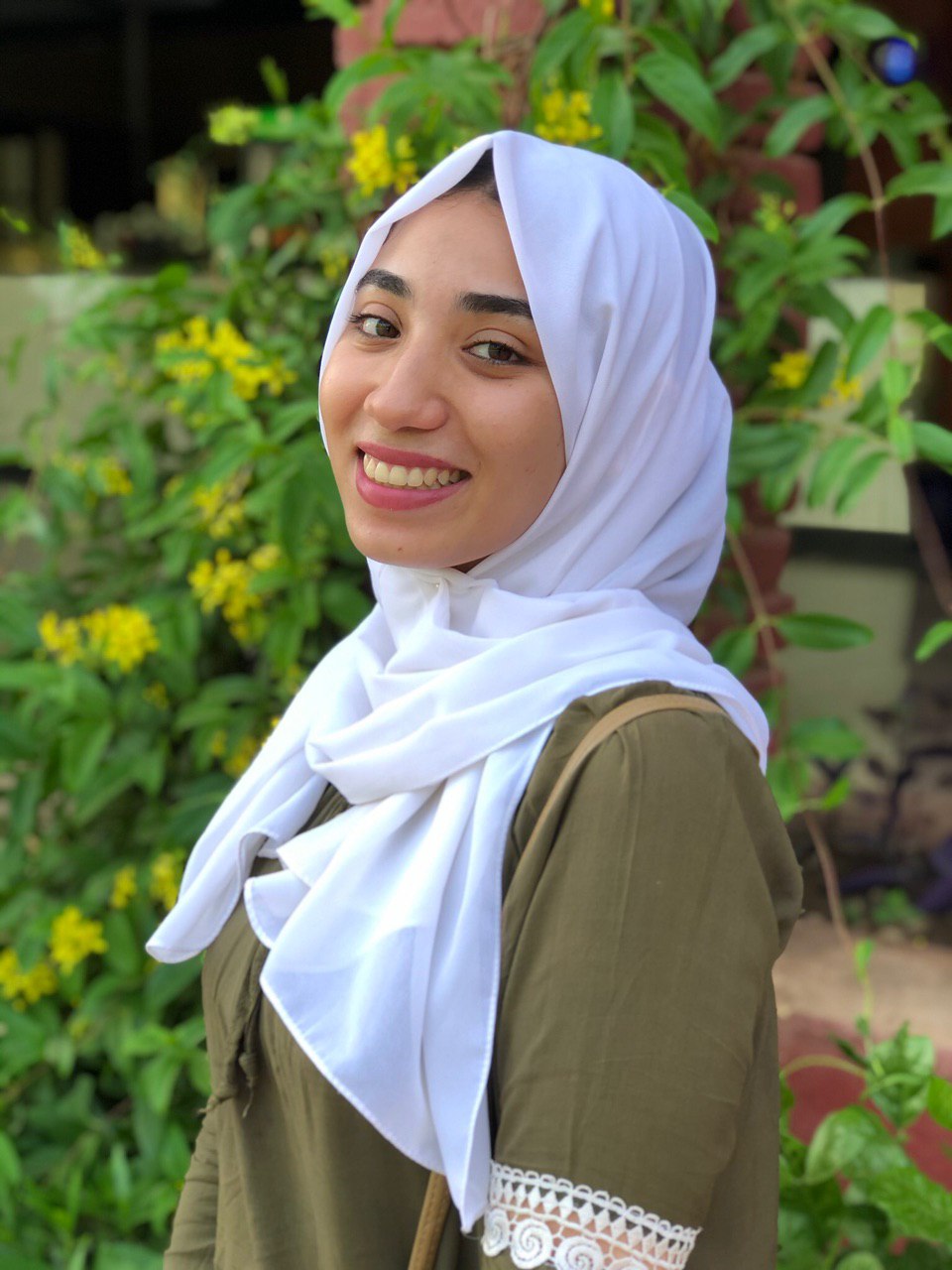
Title: The Perception of Medical Students Towards Virtual Learning During Corona Pandemic at Faculties of Medicine at Alzaiem Alazhari and Khartoum Universities, Khartoum, 2021
Invited Presentation
Leenah Mohammed Salih Mohammed
AlZaiem AlAzhari University, Sudan
Abstract
Background: “Is COVID-19 pandemic the end of classical class room based education?” the most frequent question nowadays after the forced restrictions which included educational intuition lockdown.
Objective: to study the perception of medical students towards virtual learning during COVID-19 pandemic at faculties of medicine..
Methods: a descriptive cross-sectional faculty -based study in which self-administered questionnaires were distributed to 357 medical students. Respondents were selected using simple random sampling, and data was analyzed using SPSS 26.
Results: The average number of hours spent on virtual learning before and during Corona pandemic were statistically significant (p<0.05), with average of 1.9 hours per day before the pandemic and average of more than 3 hours per day during the pandemic (57.9%). The majority of the participants 77.9%, thought that virtual learning did not successfully replace the face to face classical teaching especially the clinical medical students 87.2%, who claimed that clinical skills cannot be taught virtually and they need the direct patient contact education.
Conclusion: Virtual learning in these two medical faculties was found to be well perceived, because its pros outweighed its cons, as it was the most appropriate method to use in order to continue the education process during the pandemic.
Biography
AlZaiem AlAzhari University, Sudan × Biography Leena Mohammed worked on Drainage of skin abscess-elliptical incision-Incision Academy, Good Clinical Practice - Research Methodology NIDA clinical trials network, Infection prevention and control (IPC) for novel coronavirus (WHO) NHCPS ACLS and NHCPS BLS certification courses 2020, Issues in vaccine development for coronaviruses (Harvard medical school), Treatment of infectious disease and immunocompromised patients (Harvard medical school) Psychological first aid-johns Hopkins University (Coursera), Patient safety and quality improvement: developing a systems view-johns Hopkins University (Coursera), Covid-9: tackling the novel coronavirus-London School Of Hygiene and tropical medicine and the UK public health rapid support team (future learn) Strategies for personal growth and development-Yali network

Title: Intelligent Procedural Packaging: Enabling Precision Public Health
Keynote Presentaion
Gregg Boalch
Managing Director, Caretech Services, Australia.
Abstract
COVID has highlighted both the current shortcomings and the opportunities for digital health in supporting and protecting public health globally. Be it at international, national, regional or healthcare provider level, the fight against the pandemic has shown the previous fragmented, silo-based approaches have failed in protecting and saving peoples lives. Intelligent procedural packaging, tying the data to both the medication and the patient for the full product life cycle, can provide the mechanism to digitize the medication process whilst providing the missing real-time feedback loops to public health custodians, regulators and pharmaceutical manufacturers. It also supports virtual stockpiling of medications and effective management of the disease control process within the community.
Biography
Gregg Boalch is a recognized leader, guide, and mentor within the Australian digital community. He has a successful industry track record in Australia, SE Asia and Europe over more than 30 years, resulting in more than 700 LinkedIn endorsements and recommendations. Gregg has led strategic technology-enabled change for both business and Government (all three levels) clients in Australia and the UK, in verticals including health, finance, media, national retail, publishing, tourism, energy & resources, environment, education, and community services/NFP. Gregg was a Senior Adjunct Fellow with the Graduate School of Business at Curtin University, lecturing and researching Information Systems and Health Record Systems, and he delivered Masters programs in e-Commerce throughout SE Asia. He created, grew, and subsequently sold a sustainable, multi-award-winning business in food and wine tourism. He has also been a Board member of a number of WA and Victorian NFP organizations, including roles as President, vice-Chair, and Finance Director. He was until recently Alliance Chair for WAITTA, and recently co-chaired APACMed’s Interoperability White Paper. Gregg misses travel, still plays guitar & bass, and is a proud supporter of his local football team, the arts, and his community.

Title: Distance learning on epidemic and pandemic outbreaks in Western Balkans: Albania
Keynote Presentation
Dr. Elida Mataj
Institute of Public Health, Albania.
Abstract
In the Balkan countries, the capacity to implement effective actions during emergencies seems to be very limited. From the health perspective, given the expansion of the definition of Public Health and well-being to include social challenges, economic values, security, etc., we realized that technical skills, and, in general, the capacity of social, economic, and environmental systems, along with experts, at the central and local level, to cope with a hazardous event, seems to be a major issue. Moreover, recent Public Health threats provide to each one of us that many ongoing burdens, particularly dynamic (e.g. migration and health epidemics and pandemics) and with strong cross-border implications, could be better faced by working on a common ground of understanding than with just the effort of a single Country.
Aim
The project aims to strengthening the abilities of all parties to effectively and timely cope with outbreaks preparedness and response, promoting national and cross-border cooperation, and to identify the capacity of each national public health surveillance system as well as regional communication channels to be activated in times of epidemics and pandemics.
OBJECTIVES
The overall goal of the project is to improve outbreaks reduction skills and resilience-building practices through a Region-wide harmonized system of learning. Specific objectives:
1. To establish a plan for actions to address Regional challenges to be translated into SMARTEST training opportunities (Specific, Measurable, Realistic, Time bounded, Environmental, Sustainable and Teambuilding) on DRR;
2. To enhance at Regional level the Public Health technical capacity of selected experts;
3. To provide technical assistance for building community resilience practices and skills at local level;
4. 2-month mapping of national surveillance system and diagnostic labs to develop a permanent forum – open source - for intersect oral know-how exchange on the topic;
5. To ensure adequate availability of quality PH training programs in higher educational institutions in the Balkan Region.
METHODOLOGY
The study aimed to assess the Public Laboratories of Microbiology, the needs in these laboratories in order to fully perform the defined work.
The study also aimed to assess the microbiology diagnostic system in the function of epidemiological surveillance, including the assessment of the level of specialists working in these laboratories.
RESULTS
1. Questionnaire on: Mapping the equipment in Public Microbiology Laboratories in Albania;
Referring to the questionnaire related to the description of equipment available in microbiological laboratories (districts taken under investigation) the results are presented in the following tables.
Out of 45 in total of the equipment presented in the questionnaire on the mapping of microbiological laboratory equipment, the results show that 17 (37.8%) of the equipment is missing in all laboratories investigated in the selected districts for obtaining information
2. Questionnaire on - the equipment that would be needed in the microbiology laboratory in order to be able to fully perform the assigned job.
From the results obtained in relation to the needs of laboratory equipment defined in the first questionnaire, as well as the reasons for the need for each device that is able to work, all investigated laboratories have stated that they are mainly needed to confirm the diagnoses , surveillance and explosions.
3. Improving microbiology diagnostic system quality in the function of surveillance
In all the requirements addressed in the questionnaire of Improving microbiology diagnostic system quality in the function of surveillance deficiencies are persistent in each of them
Biography
Dr. Elida Mataj Ph.D., MSc, MPH – Epidemiologist, and Head of Environmental Epidemiology Sector at the Institute of Public Health, Department of Evaluation and Treatment of Public Health Risks. I work in applied research at national and international level on public health issues and publications of relevant articles. Coordinate Public Health and Environmental Health Training Programs at national and international levels. Design training and university programs in public health, health statistics, and epidemiology, and health management through innovative methodologies. Lead and coordinates the implementation of EU-supported projects.

Title: Impact of Covid-19 Pandemic on Women’s Health in India: Community Perspective
Keynote Presentation
Dr Sujata Verma
Chief Advisor-Health and Care Sahastradhara Foundation Mumbai, India.
Abstract
Introduction: Government of India adopted the Reproductive, Maternal, New-born, Child and Adolescent Health (RMNCH+A) framework in 2013, during COVID-19 pandemic this is very much essential and aims to address the major causes of mortality and morbidity among women and children not only at health facility but at household level also. Ministry of Health & Family Welfare, Government of lndia has launched a new initiative namely- SUMAN- Surakshit Matritva Aashwasan" with an aim to provide assured, dignified, respectful and Quality healthcare at no cost and zero tolerance for denial of services for every woman and new born visiting the public health facility in order to end all preventable maternal and new born deaths and morbidities and provide, a positive birthing experience. The expected outcome of this new initiative is "Zero Preventable Maternal and New born Deaths and high quality of maternity care delivered with dignity and respect" According to the latest figure released by Registrar General of India - Sample Registration System (RGI-SRS) Maternal Mortality Ratio (MMR) for the period 2014-16 is 130maternal deaths per 100,000 live births. With this, India has achieved the Millennium Development Goal (MDG) 5 i.e. India have achieved a reduction in MMR by three quarters between 1990 to 2015. The target was to achieve 139 maternal deaths per 100,000 live births. Pregnant women should not appear more likely to contract the infection than the general population (ICMR, India). However, pregnancy itself alters the body’s immune system and response to viral infections in general, which can occasionally be related to more severe symptoms and this will be the same for COVID-19.The coronavirus epidemic increases the risk of perinatal anxiety and depression, as well as domestic violence. It is critically important that support for women and families is strengthened as far as possible; that women are asked about mental health at every contact .
Objectives:- To increase the Early ANC registration by family due to COVID-19 pandemic during lockdown and unlock period in India. How to ensure 3 or more than 3 ANCs to all the expectant mothers and special attention to high risk pregnancies during lockdown. To decrease the incidence and progress of anaemia in pregnant and lactating women. Provide adequate opportunities for safe deliveries and to increase institutional deliveries. To improve the coverage of post-partum care at household level. To increase access to Emergency Obstetric Care for complicated deliveries through strengthening of Family care. How to reduce Maternal Mortality Ratio during COVID-19 pandemic in India.
Analysis- Family care providers should create a plan to address the possibility of a decreased health care workforce, potential shortage of personal protective equipment, limited isolation rooms, and should maximize the use of tele health across as many aspects of prenatal care as possible. Each household should consider their appropriate space and essentials needs to prevent transmission of the virus that causes COVID-19. Pregnant women should be advised to increase their social distancing to reduce the risk of infection and practice hand hygiene.
Biography
Dr. Sujata Verma is a Public Health researcher with a distinguished academic and administrative career. She obtained her Ph.D. (Demography) from International Institute for Population Sciences (IIPS), Mumbai with University Grant Commission (U.G.C.) Junior/Senior Research Fellowship (JRF/SRF). She is Post Graduate in Health Insurance from Insurance Institute of India (Mumbai).She is a life member of Jansankhya Sthirta Kosh and long-term association with the International Indian Statistical Association. She has been associated in various capacities with several national and international research and academic organizations. She served as State Programme Manager cum Demographer to UNFPA on consulting Family Welfare Programme, Research, and Management.
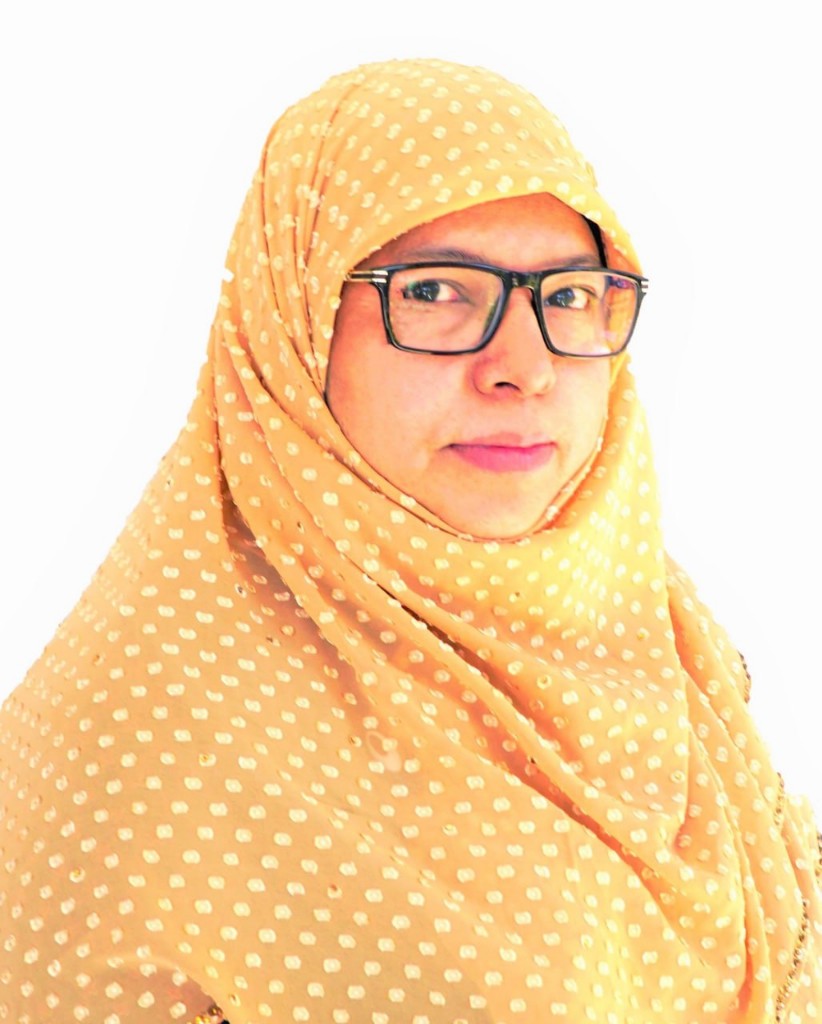
Title: The matrix of innovation in health technology and resources optimization is a cost-effective solution to the potential problems in pregnant women’s care during COVID-19 pandemic
Keynote Presentation
Dr. Shahnur Begum
Managing Director & Public Health Researcher at TFE Global Global Company, Malaysia.
Abstract
The rising cost due to covid-19 pandemic is a major public health problem. The rates of morbidity and mortality in pregnant women and neonates are higher in compare to pre-pandemic and past influenza pandemics periods. To address the catastrophic effects of COVID-19, the needed care is imposing overburden to individual, and the global and national health care system and economy. The published documents have revealed the significant increases in the incidence of stillbirth and preterm birth, maternal death, ruptured ectopic pregnancy and mean maternal depression scores during CoVID-19. Due to lockdown and restricted access to health care facilities, the number of unattended for antenatal care also has increased in significant number, which might have resulted in the higher rates of stillbirth, neonatal and maternal death. The findings also highlighted the disparities related to financial status, ethnicity, race, gender and religion among this vulnerable population. Corruption, lack of accountability, insufficient preparedness for disaster management identified as important challenges in the way to provide essential services. Optimization resources and work force, increasing capacities of exiting facilities, updating telemedicine, coping with digitalization of antenatal care, increase allocation for R & D activities are prime solutions for developing a quality health care system at affordable cost. Nevertheless, we should not neglect the existing communicable and non-communicable diseases and other major health problems. In future problem-based research could be the guidelines for policy makers and health leaders to set up cost-effective policies and strategies to ensure better and equitable care, and to accelerate achieving SDGs.
Biography
Dr Shahnur Begum working as Group CEO of TFE Global Company, Founder Director & Principal Researcher of TFE Research & Innovation Centre, and a member of Elsevier Advisory Panel. She also worked as Medical Officer IBN Sina Hospital, Dhaka, Bangladesh. General Practitioner (GP) as physician Self-employed, Dhaka, Bangladesh,1992-2008, Director TFE Associates ( Bangladesh), Privately owned organization for R&D and Consultancy, 2005-2016 Managing Director TFE Global, Bangladesh Pvt. Ltd., 2016-present Director TFEG (S) Pte Ltd. Editor Journal of Manufacturing Operations Research and Sustainability( JMORS) She also worked as Scientific Reviewer at 1. Bulletin of World Health Organization 2. Emarald publishing: International Journal of Production and Performance Management 3. BMC Complementary and Alternative Medicine 4. The 5th International Conference on Public Helath (ICOPH 2019) 5. The 6th International Conference on Public Helath (ICOPH 2020)

Title: PREGNANCY INDUCED HYPERTENSION AND ASSOCIATED FACTORS AMONG PREGNANT WOMEN AT HARGEISA GROUP HOSPITAL IN HARGEISA SOMALILAND CITY
Invited Presentation
Faisal Omer Abdi
Public health researcher at research supervisor, Somalia
Abstract
Background: Disorders of Pregnancy-Induced Hypertension (PIH) was the major of public health problem in the obstetric population as they were one of the leading causes of maternal and prenatal morbidity and mortality. The world health organization estimated that at least one woman dies every seven minutes from complication of hypertensive disorders of pregnancy. Little is known about the magnitude of PIH and factors associated among mothers receiving range of antenatal and other obstetric services includes delivering and postnatal mothers in Hargeisa Hospital, Somaliland. Objective: To assess proportion of pregnancy induced hypertension and associated factors among women receiving antenatal care and other obstetric services includes delivering and PNC at Hargeisa Group Hospital, in Somaliland City. Methods; Facility based descriptive cross sectional study design was conducted. Data to assess proportion of pregnancy induced hypertension and associated factors among pregnant women receiving antenatal care and other obstetric services include delivery and PNC. Duration of research project (March up to November 2019), by trained interviewers using pre-tested structured questionnaire. The study unit was (228) subjects. Data entry and analysis will be done using Epi data version 3.2.1 and SPSS version 20 statistical soft- wares respectively. Findings were presented using tables and figures. Univariate, bivariable and multivariable analyses was carried out to answer the objectives set. The degree of association between dependent and independent variables will be described using crude odds ratio (COR) and adjusted odds ratio (AOR) with 95% confidence interval (CI). Conclusion and recommendations: 9 up to 10% women develop pregnancy induced hypertension at Hargeisa group Hospital in Somaliland City. This is figure is very high compared East Africa countries. Socio-demographic factors like age less than 25 years, lack formal education, previous history of PIH and family history of PIH were independent predictors of development of pregnancy induced hypertension. Hence, this study suggests that early detection and management of mothers with PIH should be mandatory as part of focused antenatal care and other obstetric mothers including delivery and postnatal cares.
Biography
Faisal Omer has completed his (Dual masters) from department of public health and department of reproductive at Addis Ababa University in Ethiopia and He has been working as a public health professor of Adna Adan University Hargeisa University and Golis University (Hargiesa Somaliland) since 2014 He has published more than 30 papers in reputed journals and has been serving as the director of the Health researcher of Hargeisa University (UOH.)

Title: Minority Stress and Effect on Cardiovascular Health in African Americans: Implications for Health Care Providers
Keynote Presentation
Dr. Theresa Capriotti
Villanova University USA
Abstract
There are distinct racial disparities in risk of cardiovascular disease (CVD) with African American individuals enduring higher rates of disease than Caucasians. Although many factors contribute to these disparities, this paper focuses on the role of racial discrimination as a stress-related factor that contributes to racial disparities in CVD. This review of the literature was completed through a search of the database PUBMED, using the following search terms “minority stress”, “hypertension”, “African American”, and “cardiovascular disease”. Forty five studies were reviewed and 32 are described in this paper. Numerous studies indicate that stress due to racial discrimination known as ‘minority stress’ evokes acute and chronic changes in cardiovascular disease parameters.
The Study of Women's Health Across the Nation (SWAN) study, 2006, found higher rates of early coronary calcification in African American women who experienced chronic racial discrimination (Lewis, et al, 2006). Another key study cited in this paper is the Multi-Ethnic Study of Atherosclerosis (MESA). The MESA study followed 6,814 asymptomatic persons subjected to racial discrimination from 6 major US cities for 10 years from 2000 to 2011. It notably found greater risk for CVD among middle aged and older Black adults subjected to racial discrimination. Observed associations were largely independent of age, sex, education, family income, marital status, and study site, as well as health behaviors and traditional risk factors for CVD (Everson-Rose, et al, 2015). Numerous investigators have focused on cardiometabolic health parameters in African Americans and minority stress. Minority stress has been linked to increased BP ( Ford, et al, 2016; Shin, et al, 2017; Michaels, et al, 2019), increased body mass index (BMI) ( Cozier, et al, 2014; Cunningham et al., 2013; Shin, et al 2017), and increased percent body fat (% BF) (Lewis, et al, 2011; Shin, et al, 2017). Beatty Moody, et al 2018 found everyday discrimination is associated with development of metabolic syndrome in African American women. Some studies have also shown that chronic stress due to racial discrimination is associated with adverse patterns of vascular functioning among African Americans. Endothelial dysfunction which causes vasoconstrictive effects has been reported in studies by Yang, et al, 2019; Kershaw, et al, 2017 and Wagner, et al 2013. Cooper and colleagues, 2009 found perceived discrimination was positively associated with high endothelin-1 levels which leads to vasoconstriction and left ventricular hypertrophy in African Americans. Discrimination also has been linked to higher levels of C-reactive protein (CRP), a biomarker of vascular inflammation among African Americans (Beatty, et al, 2014; Goosby, et al, 2015; Cunningham, et al, 2012).
It is important for health care providers to be aware of the phenomenon of minority stress and how it affects cardiovascular health in African Americans. Unconscious and implicit bias among clinicians contributes to the discrimination experienced by persons of color and incites distrust in the health care system. In addition, innovative health promotion strategies are needed to enhance the cardiovascular health of African Americans. This literature review identified nurse-led health promotion programs that have effectively provided preventive cardiovascular health care of African Americans.
Biography

Title: Re-establishing the rapport: the link between healthcare practitioner and client
Keynote Presentation
Dr Safieh Shah
Covid-19 educational settings exposures investigations team at Region of Peel, Canada.
Abstract
The link between ‘health’ and ‘healthcare’ had been severed especially within the North American continent’s landscape of healthcare systems, with healthcare practitioners compensation and incentives based on the more expensive diagnostic and pharmaceutical-driven therapeutics. In other countries’ at par with the amount of health investment (from their GDP) Canadian health provision lacked a focus on localized scientific evidence, coupled with client feedback for individualized healthcare. Here medical outputs within an insurance-controlled system of healthcare have been focused on cure rather than prevention. As such, a healthcare system has developed where the most vulnerable groups and marginalized communities’ both in terms of socioeconomic deprivation and/or medical fragility have suffered immensely, with inadequate support, inconsistent healthcare provision and low public health knowledge. Standard of care has not been centred around population well-being in mainstream medical practice and outcomes no longer have the collective measure of community-oriented wellness as health indicators. The pandemic has helped change this with COVID-19 response once again being recognized as a basic human right, as the Canadian government along with healthcare practitioners at every level trying to focus on prioritizing public health and preventative sciences once more by liaising across sectors. This is because the current pandemic shed light on the limitations, gaps and challenges of the pre-existing system, as COVID-19 precautions began leading to more outcome-oriented care, more client-centric emotional labour by healthcare practitioners and active support provision, despite virtual interactions between providers and their remote clients.
Biography
During medical school, Dr Safieh Shah was invited to work at the University of Pennsylvania, where she fell in love with academia, later she worked at the Children’s Hospital of Michigan in Detroit. As a medical doctor, she then completed her Master of Science in Public Health Research at The University of Edinburgh’s College of Medicine and Veterinary Medicine. Since 2012 she has worked as a humanitarian researcher operationalizing public health globally, as a scientific mentor. She volunteers as an academic reviewer; and is currently serving in Canada’s COVID-19 Educational Settings Exposures Investigations Team with The Region of Peel’s municipality.

Title: Epidemiology of Cervical Cancer in West Bengal, India and Barriers to Prevention
Invited Presentation
Tasnuva Khan Efa
The University of Texas Health Science Center at Houston, USA
Abstract
Background
Cervical cancer is the fourth most common cancer around the world. According to 2018, there were more than 570,000 new cases of cervical cancer.i Over 310,000 death occurred due to this cancer which is 7.5% of all death from cancer globally.i Women of age 40-60years are more vulnerable to cervical cancer. It is not very much early detectable by the symptoms only. Later stages show more obvious symptoms with poor prognosis. So, without preventive measurement, cervical cancer is not easily detectable hence still a lethal cause to death for women worldwide. 85% deaths due to cervical cancer occur in LMICs.
Almost 99% cervical cancer is contributed by Human Papilloma Virus (HPV). Several serotypes of HPV are responsible for infection, but HPV 16 and18 are the most common cancer causing serotypes.iii Vaccination against HPV is widely available and implemented in developed countries to prevent HPV infection among the young and adolescent girls, which reduced the prevalence of cervical cancer in these countries. Widely available screening program like PAP smear test, cryotherapy, Acetic acid test (VIA) are recommended to detect infection earlier. LMICs which are heavily burdened with cervical cancer observed that vaccination with additional screening program up-to two times in life contributed to reduce prevalence of cervical cancer in those regions.
India belongs to the group of LMIC countries which has cervical cancer as the 2nd highest prevalent cancers among women and it carries one-fifth burden of world cervical cancer in 2018.Overall, cervical cancer is more prevalent in India among women aged 35-55years and from comparatively lower socio-economic background. Common population have very poor knowledge about risk factors and prevention. Comparatively advanced states like Delhi, Punjab and South India where education rate is higher and people are more affluent seem to have better knowledge about cervical cancer and they are more prone to taking preventive measures, but most of the other states are lagged behind in terms of knowledge or participation. West Bengal reflects the same scenario. Very few studies among small sample groups are available which observed that very few acknowledgments of cervical cancer risk factors. The rate of vaccination and screening is very low. The concept of discussing reproductive organs is very stigmatized. Wrong concepts about vaccination and lack of female autonomy about health issues are making the scenario worse for them.
Aim of the Study
The primary purpose of this study is to shed light on the epidemiology of cervical cancer in the West Bengal region. An additional concern will be to find out why people are reluctant to go for vaccination and early screening program and what can be the possible ways to motivate and create more awareness among these populations to implement precautionary measures.
Method of Study
Systematic review and meta-analysis of the existing study results will be accumulated to get a bigger picture of cervical cancer and HPV vaccine in the West Bengal region. The current barriers to HPV vaccinations, the social issues, availability of data on cervical cancer have been reviewed for this study.
Conclusion
Cervical cancer is one of the biggest preventable cancers among women, but it is still very under-acknowledged among various levels of society due to many barriers, especially in the West Bengal region. These issues need to be addressed systematically to remove the barriers, make people more knowledgeable about cancer to prevent and treat it accordingly
Biography
"I am Tasnuva Khan Efa. I am originally from Bangladesh and currently residing in the USA. I had my bachelors back in Bangladesh in Business studies and worked for 5years in the communication and marketing sector. Then I moved to the USA and finished my Master’s in Public Health with a major in Epidemiology and Global health. My keen interest to work in the humanitarian sector made me change my track. Right now, I am a student of Biomedical Informatics in the University of Texas Health Science at Houston and at the same time, remotely working with ICDDR (International Centre for Diarrhoeal Disease Research)in Bangladesh. I feel passionate about cancer research, more in the southeast Asian region as cancer is getting prevalent in this region, but adequate studies are yet to be done. In this conference , I will be talking about the current population studies on cervical cancer and HPV vaccination in the West Bengal region in India. I dream to spend the rest of my life researching cancer and be with the people who are fighting it."
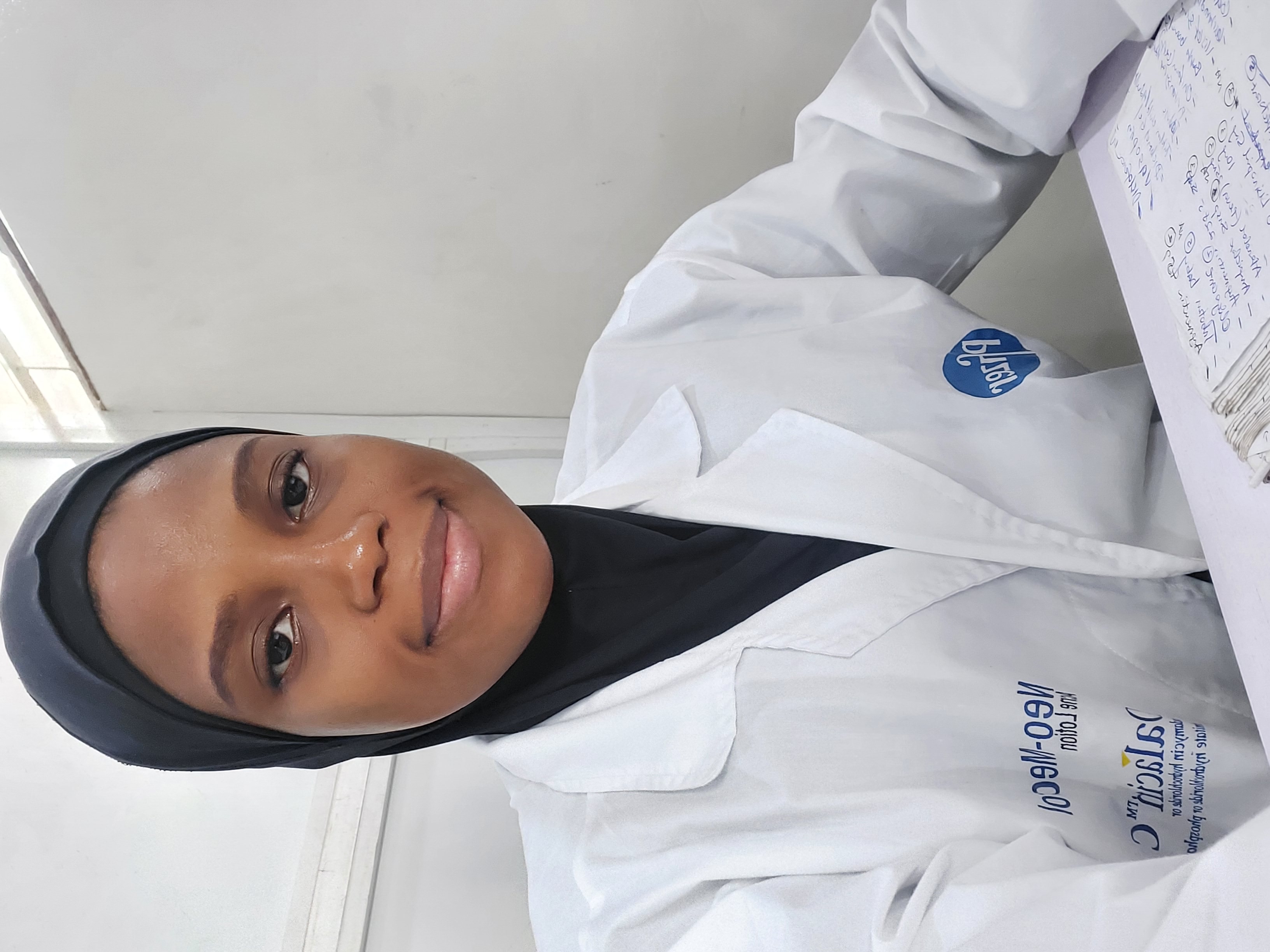
Title: Tackling Neisseria gonorrhoeae antimicrobial resistance (AMR) in England: A Public Health Perspective
Invited Presentation
Shukuralilahi Abidemi Mustapha
University of Ibadan, Nigeria.
Abstract
Neisseria gonorrhoeae(NG), a gram-negative diplococcic bacterium causing gonorrhoea,has increasingly developed resistance to treatment. Mostly transmitted through sexual contact, the bacterium affects the old and young. In 2017, there was a 22 percent increase in cases of Gonorrhoea in England. The increased resistance to treatment has necessitated dose adjustment and transition to other antibiotics, making infection control difficult.Over the last few years, resistance has been detected to the last remaining options of antibiotic therapy,Ceftriaxone and Azithromycin, and there are currently no alternatives for treating the disease. Social determinants of health such as poverty, unemployment, social and sexual practices, education, sexual groups, inadequate healthcare, and medication abuse have been associated with Gonorrhoea spread in England. The use of antibiotics in animals and food, and fake medications have also been shown to increase resistance.
Strategieslike the WHO Global Action Plan, European Centre for Disease Control Response Plan and Gonococcal Resistance to Antimicrobials Surveillance Programme (GRASP) Action Plan for England and Wales are important in controlling and treating the disease, offering interventions focused on these determinants.The growing threat of Gonococcal AMR only declines when the global prevalence of NG does. The integration of several levels of intervention focusing on the social determinants, improvement in education levels, promotionof safer sex, early detection of resistance and availability of effective medications and vaccines are necessary to halt the spread of gonorrhoea.
Biography
Shukuralilahi Abidemi Mustapha is a community pharmacist currently working and living in Ibadan, Oyo state, Nigeria. Shukuralilahi graduated with a first class degree in Pharmacy, having distinctions in Pharmaceutical Microbiology and Pharmacognosy from Faculty of Pharmacy, University of Ibadan, Ibadan, Nigeria. She is very passionate about antimicrobial use in her community and has a keen interest in tackling antimicrobial resistance. She is a polygot, speaks English, Yoruba and Hausa fluently, (and a little Turkish and Arabic). She loves connecting with people and learning from them.
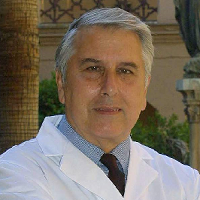
Title: Direct evidence of viral infection and mitochondrial alterations in the brain of fetuses at high risk for schizophrenia
Invited Speaker
Dr. Segundo Mesa Castillo
Psychiatric Hospital of Havana, Cuba
Abstract
There is increasing evidences that favor the prenatal beginning of schizophrenia. These evidences point toward intra-uterine environmental factors that act specifically during the second pregnancy trimester producing a direct damage of the brain of the fetus. The current available technology doesn't allow observing what is happening at cellular level since the human brain is not exposed to a direct analysis in that stage of the life in subjects at high risk of developing schizophrenia. Methods. In 1977 we began a direct electron microscopic research of the brain of fetuses at high risk from schizophrenic mothers in order to finding differences at cellular level in relation to controls. Results. In these studies we have observed within the nuclei of neurons the presence of complete and incomplete viral particles that reacted in positive form with antibodies to herpes simplex hominis type I [HSV1] virus, and mitochondria alterations. Conclusion. The importance of these findings can have practical applications in the prevention of the illness keeping in mind its direct relation to the aetiology and physiopathology of schizophrenia. A study of amniotic fluid cells in women at risk of having a schizophrenic offspring is considered. Of being observed the same alterations that those observed previously in the cells of the brain of the studied foetuses, it would intend to these women in risk of having a schizophrenia descendant, previous information of the results, the voluntary medical interruption of the pregnancy or an early anti HSV1 viral treatment as
preventive measure of the later development of the illness.
Biography
Dr. Segundo Mesa Castillo is a Specialist in Neurology, he worked for 10 years in the Institute of Neurology of Havana, Cuba. He has worked in Electron Microscopic Studies on Schizophrenia for 32 years. He was awarded with the International Price of the Stanley Foundation Award Program and for the Professional Committee to work as a fellowship position in the Laboratory of the Central Nervous System Studies, National Institute of Neurological Diseases and Stroke under Dr. Joseph Gibbs for a period of 6 months, National Institute of Health, Bethesda, Maryland, Washington D.C. USA, June 5, 1990. At present he is member of the Scientific Board of the Psychiatric Hospital of Havana and give lectures to residents in psychiatry.

Title: A Laughing Matter: Humor to Improve Wellness, Mental Health & Raise Emotional Intelligence
Invited Speaker
Matt Kazam
Humor Scientist, Virtual Speaker Las Vegas, United States
Abstract
Humanity is at a tipping point. There has been a loss of connection, a reduction in emotional intelligence and our empathic engines have stalled. This combined with a world in the grips of a pandemic, social unrest, racial injustice, climate change has created such a toxic landscape for humans to thrive. Happiness & joy levels are down, and stress, anger and fear are at an all-time high and it is taking a toll on both our physical & mental health.
Humor has been shown to be a powerful tool in helping to manage such disruptive negative emotions as anger and anxiety/tension. Humor can also elevate one’s mood from the depths of the daily sources of (non-clinical) depression we all occasionally suffer from every day.
Humor can also bring us together during these tough times allowing us to engage with each other, share your truth, story, message & perspective while forming a powerful human connection through laughter, empathy & trust and creates a sense of belonging, inclusion and safety.
It is safe to say we are at our best as humans where we are laughing and making each other laugh. This talk will explore the public health problems facing our society and look for ways where humor can help. From education & communication to treatment & patient experience we will look to show ways humor is being successfully used both organically and strategically in the Public Health space around the Globe.
Humor Scientist Matt Kazam will take the audience along with him on this journey to show that laughter is not only the best, but the right medicine to address this very real public health problem. When the going gets tough, the tough get laughing.
This talk also hopes to change the mindset when it comes to humor the art form and humor the powerful part of the human experience and through the data and science, reconnect the audience with the funny that lives inside of all of us. Empowering the audience with the strategies, tools & insights into how to use humor with intention to thrive in both our personal & professional lives.
Biography
Matt Kazam is a veteran comic who can be seen performing at the nation’s top comedy clubs, casinos and theatres. He has performed stand-up comedy over 6,000 times in 45 states and 7 countries. Matt has also performed at over 1,000 corporate and private events. He has an amazing ability to work any crowd, anywhere, any venue. Stand-up comedy has been a dream of Matt’s his whole life. Growing up in New York City, he started performing shows for family and friends at the age of three, but it wasn’t until graduating college from George Mason University with a degree in finance that Matt finally took the plunge as a full-time stand-up comedian. He has made television appearances on NBC’s “Last Comic Standing”, Fox’s “Big Red Couch”, Comedy Central’s “Stand-Up Stand-Up”, VH-1’s “Fools For Love”, TLC’s “Two For Vegas”, The Discovery Channel’s “Lux List”, WGN’s “The Bob & Tom Show. He has appeared with Tommy Davidson on the Rascal’s Comedy Club Webcast “Live Caught On The Net”. In addition, Matt’s comedy special,“Stand-Up and Sit-Down with Matt Kazam,” is currently airing on XM Satellite Radio. In addition to these television projects, Matt was a writer for the 2008 “Fox Reality TV Awards” on the Fox Reality Channel. Matt’s 1-man show, “40 Is Not The New 20,” had a residency at the Riviera Hotel and Casino in Las Vegas. The hilarious show tackles the subject matter both literally and figuratively. The material explores how much the world has changed in the past 40 years. The show is a mid-life celebration of the knowledge and experience that can only be gained with age. The show is like comfort food for the soul. It puts the notion that 40 is the new 20 on trial and breaks down the concept into categories such as technology, the media, politics, relationships, family, our priorities and even how much our bodies have changed over the years. Matt walks the audience through specific and general examples on how the 40 is not the new 20 and more importantly why? All the while, the audience is being thoroughly entertained as well as feeling an overwhelming sense of nostalgia. Everyday topics like marriage, fashion, parenting, work, commuting, bills and exercise, just to name a few, will be compared and contrasted though the eyes of a 40+ year-old taking a look at today’s 20 year-old young adult. Matt’s energetic style, witty observations and unassuming charm combined with his youthful enthusiasm and instant likeability are the driving forces behind his unique and hilarious comedy.

Title: Education and community-based health practices
Invited Presentation
Dr. Nehal Elsayed Soffar
Alexandria Pediatric Center, Egypt
Abstract
Education and community-based health practices play a crucial role in preventing diseases and improving health and quality of life. Following this belief drove me to co-create "Psychology" a Facebook advocacy page in 2013. I used it as a platform to promote, support, and advocate for young people's mental health and social wellbeing after I sensed the lack of accessibility to mental health and social care support in my community. Earlier in 2014-15, I joined the Egyptian Pharmaceutical Students' Federation (EPSFAlex) as a Public Health Committee Team Leader to spread awareness by contacting the public in schools, faculties, malls, clubs, orphan shelters, villages, and others. As a result, I reached 8000+ people in 21 different locations within Egypt through 12 health promotion monthly campaigns. Additionally, I co-founded the "Wander Destinations" initiative that targets integration between safe tourism and health promotion. Achieving our objectives through 2 approaches; the first is to manage touristic trips within Egypt, prioritizing safety. The second is to link each trip with a global health challenge where advocacy is a needed value. My work was awarded among the top 100 startups at the “Startup Istanbul- 2019” global competition out of 160,000 startups founded in 166 countries.
I was also awarded one of the top 10 science communicators in Egypt by the British Council in Famelab 2020 international competition for my health-related educational talks to the public. I am expanding my dedicated health education activities in Egypt by developing my current initiative's health promotion aspect and targeting underserved populations and minorities.
I am working in the clinical pharmacy field, where I am confronted with Egypt's reach and vibrant health and socio-economic realities. The fast-changing society, together with its live issues and underlying obstacles, provides me with an understanding to accurately analyze events and come up with potential solutions.
I aim to promote effective and safe healthcare across Egypt and beyond. Education and community-based health programs can help to spread awareness for preventing diseases and detecting them earlier. It is a needed value to develop the health system globally.
I would share my experiences and the lessons I learned in the Global Public Health webinar, explaining educational and Community-Based Programs and where we could apply them, why they are essential, and how they could contribute to achieving Sustainable Development Goal-3 (Good Health and Well-being). It will be an excellent opportunity to strengthen the network between public health experts, researchers, other scholars, and our diverse communities' challenges, discussing a potential collaboration to find lasting solutions for these similar challenges and innovations in the fields of public health.
Biography
Dr. Nehal Soffar is a Clinical Pharmacist and a Health Promotion Volunteer at Red Crescent Alexandria, with almost 7 years of health-related volunteering and work experience, driven by public health advocacy and equality for all. She was recognized by the British Council as one of the top 10 science communicators in Egypt in Famelab international competition 2020. Nehal co-founded the "Wander Destinations" initiative, responsible for road safety and health promotion during the trips. It has been honored as one of the top 100 startups at the "Startup Istanbul-2019" global competition out of 160,000 international startups. Earlier in 2014-15, Nehal began her activities in the educational and communitybased programs. She was appointed as Public Health Committee working group in Egyptian Pharmaceutical Students' Federation Alexandria and kept going in other health-related activities.

Title: Definition of Stress
Invited Presentation
Dr. Maria Dalamagka
Department of Anaesthesiology, General Hospital of Edessa, Greece
Abstract
There are many different definitions of stress. Some define stress as a disorder of a person's normal psychological or physiological state. Sometimes they use the word "stress" as a term equivalent to "stimulation" and "activation". It is also used as a term for "bad effects".
The many different definitions of stress have caused a great deal of ambiguity and confusion on the subject. When reading an article, listening to a lecture, or engaging in a discussion about stress, make sure the definition used is clear.
One of the most useful definitions of stress is:
Stress is an internal process that occurs when a person encounters a requirement that is considered to be beyond the resources available to meet it effectively and where failure to meet demand effectively has significant side effects. In other words, stress is experienced when there is an awareness of a substantial imbalance between demand and capacity, in conditions where dissatisfaction with demand is considered to have undesirable consequences.
Related concepts
Understanding and realizing the imbalance between demand and capacity and the negative consequences of unsatisfactory demand is essential for the individual to experience stress.
However, the perception does not have to be accurate. A false belief can cause significant stress.
Anxiety is the facts and thoughts that lead a person to realize that there is a threatening requirement. The strain is the negative effects of stress. The strain can appear as fatigue, irritability, difficulty concentrating, medical and physical problems, insomnia, depression, anxiety, overeating, drug and alcohol abuse, risk-taking or reduced function, to name a few. Stress can be both positive and negative.
On the positive side it warns us of a threat and increases the level of stimulation and activation so that we can be more effective in dealing with the threat. It is poor management or excessive stress that causes stress and can be devastating to the individual or the system.
When a potential stressor is considered threatening, the person's level of arousal increases and stress is experienced. The individual selects from the available resources a coping response that is expected to be effective in reducing or eliminating stress. If stress is successfully reduced, the person experiences relaxation of arousal and increased confidence that they are able to handle future stress.
If the coping response is not successful, the stress and increased arousal continue.
If new strategies are not tried or successful, prolonged stress and increased arousal lead to stress. There is no absolute right way to manage stress.
The best approach is to evaluate the specific situation, adapt the method to the situation data, and then monitor its effectiveness.
Stress management focuses on one or more of the five interacting components involved in the stress process:
1) demand, 2) awareness, 3) arousal, 4) capacity, and 5) negative consequences.
Here are some examples:Identify and reduce requirements or increase capacity by setting limits, ie saying "no" and not taking on additional responsibilities before fulfilling or checking existing ones. Get more time or extra help or increase your efficiency by using better tools or getting extra training. Awareness, perception or cognitive component, is probably the most important aspect. We need to be aware of all the relevant issues concerning our requirements, our capabilities, our resources and the possible consequences.
We need to look at these things accurately and clearly and plan accordingly.
Our beliefs will determine how we handle issues and how we feel.
We could also put ourselves in danger by having false beliefs, using denial and avoidance, and not knowing or perceiving a real threat.
Do something to reduce the excitement and intensity and reduce the activation level.
Take a break and stop thinking about the demands and the consequences, relax and focus again on pleasant events. Exercise at extra intensity by exercising or participating in leisure.
The use of drugs should be avoided or used only as a temporary last resort, because something needs to change.
Accept what cannot be changed and refocus your thinking and energy on what can be done to overcome the negative and improve things. Occupational therapy can help minimize or eliminate any physical or psychological problems that have developed due to stress. Everyone experiences anxiety and is vulnerable to it. We can manage it, reduce it and control it and we can minimize or prevent the negative consequences. There are some similarities between mechanical systems and human systems that are useful in assessing the strong effects of stress.
Every system, human or mechanical, has limits and requirements for efficient operation.
Each system operates within the limits of tolerance for the requirements, pressures and tensions imposed on it.
The electrical circuits in your home are capable of handling a limited amount of power.
If the water pressure in your plumbing is higher than it is designed to handle, a component will eventually leak or break.
If you use your new car hard all the time and neglect proper maintenance, it will start to give you trouble and it will get worse faster. Keep ignoring it and it will collapse and force you to watch it. Pushing a system beyond its limits and neglecting proper maintenance causes wear and tear. Like machines, human systems have limits and break points and require maintenance. If you are under increased pressure, pushing yourself hard and neglecting proper maintenance on yourself, you will get worse and eventually you will be hurt.
Your body will make you stop. Do not risk losing your personal relationships or losing your health. Stress can be detrimental to your health.
Improper handling of stress can be devastating.
It reduces our resistance and makes us more vulnerable to diseases and illnesses.
Increased internal pressure can cause our health to deteriorate resulting in a variety of serious physical problems. Victims of stress can lead to emotional disability.
Stress can cause loss of not only health but also jobs, families and even life.
Biography
Dr. Maria Dalamagka currently works at the Department of Anesthesia, General University Hospital of Larissa. Maria does research in acupuncture and Anaesthetics. She is PhD medicine , doctor of pain , MD. Editorial board member :Scifed Journal, Pain Medicine and Management, Enliven, Cient Periodique, Journal of Pain Management and Medicine _Longdom, Anesthesia &Pain Research _Scivision, GJNFS, Journal if Pain and Relief. Speaker and organizing committee to conferences as:Pain Research and Management Zurich 2018, 5th international conference Pain Research &Management London 2017, and Vancouver , Canada 2016, Word congress on Pain Medicine and Management Singapore 2019, International Conference on Alzheimers &Neurodegenerative desease Madrid , Spain 2018, scientific federation speaker.

Title: Understanding the role of digital contact tracing tools during COVID-19
Invited Presentation
Subarna Chakraborty
Imperial College London, United Kingdom.
Abstract
Contact tracing has played a crucial role in the management of the current COVID-19 pandemic. However, some countries have yielded more success than others despite using lesser resources for contact tracing. Currently, contact tracers follow-up and interview cases as well as their potential contacts to identify symptoms manifested by them. Close contacts are those who have spent more than 15 minutes close to an infected person. Contacts don’t necessarily remain in one particular environment such as one’s house or workplace. Shared public transports with infected people can lead to the development of primary contacts. However, it is difficult to trace them and therefore, digital contact tracing tools exist such as the NHS COVID-19 application that uses a mobile phone’s low-energy Bluetooth to log the amount of time spent near a potential case. Although these applications sound feasible for implementation, there are, however, many loopholes in the same. Factors such as the extent of trace, availability of an electronic device and internet are crucial for the application to work. In this regard, some countries such as South Korea, Vietnam and Japan had found more success in contact tracing than others for many reasons. Data surveillance techniques were used by public health authorities in South Korea to identify cases and their primary and secondary contacts. Although helpful in curbing the spread of COVID-19, it may also breach one’s right to privacy. Therefore, an amalgamation of participatory approaches and digital health techniques crucial to ensure effective contact-tracing without shaking the trust of the community.
Biography
Subarna Chakraborty is a postgraduate public health student at Imperial College London and a Faculty of Medicine Dean’s Master’s scholar. She currently works in the Community Resilience Team of the British Red Cross, and also serves as a reviewer and technical advisor at the Global Journal of Medicine and Public Health. With a strong bioinformatics background, she wants to amalgamate genetics and epidemiology to focus on antimicrobial resistance in the future. Her interests also lie in strengthening health systems in low and middle-income countries by analyzing policies that focus on incorporating frugal innovations and digital health technologies into their healthcare systems. Subarna is also a polyglot who enjoys connecting with people, an attribute which she believes can solve public health problems in communities at the grassroots level. She enjoys attending webinars and conferences to gain insight into the latest advancements in genetics and public health, and thereby, gain knowledge.

Title: Focusing on resilient and sustainable Public Health System in the developing countries:
Invited Presentation
Shilpi Sikha Das
Jawaharlal Nehru University, New Delhi, India
Abstract
The global Public Health system have been struggling with the Pandemic since more than a year now. In the developing and underdeveloped countries; the struggle takes a rough route with limited infrastructure and human resources. The pandemic has unrevealed the poor Public Health systems of different countries. It has also provided us space to learn for exchange of knowledge and expertise. Focusing on building a resilient and sustainable Public Health System ensures quality and universal healthcare. It also opens up space for different stakeholders to reconstruct and participate in innovative engagements. Combining different healthcare models can help in formation of better resilience and sustainable healthcare delivery. Targeted intervention is the tools for universal healthcare that is based on social justice and equity. The micro, mezzo and macro level intervention model can be used for a long-term change in our healthcare systems. Investment in research with limited resources and infrastructure is important as redesigning Public Health System is a slow and steady process. The need of the hour is to strengthen the Public Health system for the present and future by taking lessons from the past.
Biography

Title: Insights and Innovations in Public Health: Progressing to the Future
Invited Presentation
Aysha Haruna
Bayero University, Nigeria
Abstract
Innovation continues to be critical to tackle diseases without known cures and to help increase uptake and adherence to interventions that work. As part of the report Prioritizing health: A prescription for prosperity, the McKinsey Global Institute identified ten promising innovations, now in progress, that could have a material impact on health by 2040. Focusing on technologies that address the greatest unmet needs, we determined the impact of these innovations by interviewing experts and evaluating the current biological understanding of each disease, as well as the effort and excitement surrounding the new techniques as measured by funding. Identifying and sizing the potential scope of innovations now in the pipeline is inherently difficult, but we estimate that these technologies could reduce the burden of disease by a further 6 to 10 percent, assuming aspirational yet realistic adoption rates by 2040—on top of the 40 percent from known interventions. Some of these innovations could not only fully cure a number of diseases but also significantly extend healthy lifespans by tackling the underlying biology of aging and therefore postponing the onset of several age-related conditions. These possibilities make a sharp contrast with the innovations of the past 30 years, many of which reduced the symptoms or delayed the progression of diseases but rarely prevented or cured them. In addition, the innovations we have identified here are more digitally enabled than those of the past; for example, artificial intelligence (AI) systems make advances in omics and molecular technologies, such as gene editing, faster and more accurate. How can we improve public health globally over the next two decades. .?? 1) Omics and molecular technologies. Example: CRISPR and curbing malaria 2) Next-generation pharmaceuticals. Example: Senolytics and the regulation of cellular aging 3) Cellular therapy and regenerative medicine. Example: CAR T-cell therapy and the treatment of solid tumors 4) Innovative vaccines. Example: The AT04A vaccine and the lowering of cholesterol 5) Advanced surgical procedures. Example: Suspended animation for severe-trauma patients 6) Connected and cognitive devices. Example: E-tattoos for heart diagnostics 7) Electroceuticals.Example: Implantable microchips to mitigate chronic pain 8) Robotics and prosthetics. Example: Next-generation exoskeletons and mobility support 9) Digital therapeutics.Example: An AI-powered app to change behavior 10) Tech-enabled care delivery. Example: Multichannel care delivery
Biography
Aysha Abdulkadir Haruna is a health economist, freelance proofreader and digital marketer (social media marketing and advertisement), though hoping to take on new challenges and learn more on the job. Currently living and working remotely in Kano, Nigeria. Aysha likes attending webinars in order to gain new inspiration and inspire others. Team-oriented with proven ability to create positive rapport with people. Fluent in English and Hausa (and speak a little Arabic and French). Have a BSc in microbiology and MSc in health economics all from Bayero University Kano, Nigeria.

Title: Evaluation & assessment of the availability and utilization of Reproductive, Maternal, Neonatal, Child & Adolescent Health (RMNCAH), AIDS, Tuberculosis and Malaria (ATM) services in the targeted communities of Khost Province prior to service delivery by Family Health Houses (FHHs) and Private Health Providers (PHPs)
Invited Presentation
DR. MUHAMMAD KARIM
Public health & clinical expert, AFGHANISTAN
Abstract
Objectives:
The purpose of this study was to evaluate the impact of Reproductive, Maternal, Neonatal, Child & Adolescent Health (RMNCAH), AIDs, Tuberculosis & Malaria (ATM) services in already established Family Health Houses (FHHs) having a midwife and Private Health Providers (PHPs) having an MD (Doctor) and Nurse/Midwife conducted in the Khost province of Afghanistan’s remote areas of 07 districts at 10 km distance from the nearest health facility in September – December 2019 to evaluate, assess and analyze the services of RMNCAH, & ATM services prior to service delivery of FHHs and PHPs.
Methods:
The study was included of households (n=543-830) evaluation and assessment, individual questionnaires (n=3000) with mothers having children > 5 years old age regarding family planning (FP), Antenatal care (ANC), Delivery, Postnatal care (PNC), Immunization, Acute Immunodeficiency virus syndrome (AIDS, Tuberculosis (TB), Malaria, Key informant interviews/KIIs (n=08) with health sector policy makers (HSPM) and community level influential/CLI (n=08), Focus Group Discussions/FGDs with local communities (n=02) and Family Health Action Groups/FHAGs with community females (n=02) respectively.
Results
After confirmation and analysis of the said data, the FHHs and PHPs having 10 km distance from the nearest health facilities (HFs) in the province’ remote areas started its services for the targeted poor communities of remote areas for RMNCAH and ATM services in Khost province as usual (P<0.001).
Conclusion
The percentage of women having children > 5 years old age showed marked agreement regarding Family planning (FP = 33%), Antenatal care visits (ANC = 27%), (Deliveries at FHHs/PHPs = 50%), Postnatal care visits (PNC = 22%) and (AIDS = 7%, Tuberculosis = 12%, Malaria = 37%) services should be delivered through FHHs/PHPs at far-off places of the province respectively.
Biography
Dr. Muhammad Karim worked as [e/health-Part-time Volunteer Deputy Program Manager] – [AMC/Kabul] [September 2020 to Date] - [Senior M&E and COVID – 19 FP/Project Manager] – [AADA/Kabul] [March 2020 to Aug 2020] - [COVID-19 Hospital Manager Hospital / Director] – [MoPH/Paktia] [Sep 2019 to Dec 2019] - [Research Project Coordinator] – [UNDP/SHDP/MoPH/Kabul] [March 2019 to June 2019] - [Project Manager] – [UNFPA/MOVE/MoPH/Paktika] [June 2015 to Dec 2018] - [Mental Health FP/Trainer] – [WB/MoPH/MMRC-A/Ghazni] {Clinical Experience} Hospital Manager/Director | Paktia COVID-19 50 beds Hospital – April 2021 to August 2021 Hospital Manager | Fayez Curative Hospital – July 2019 to January 2021 Visiting Physician | Alkhidmat Complex Hospital – May 2012 to Dec 2018 Visiting Physician | Hameedi Curative Hospital – April 2014 to June 2017.

Title: A Neglected Public Health Crises: Adverse Childhood Experiences (ACEs) in South Africa – The Link Between Childhood Sexual Abuse as an ACE and South Africa’s Increasing Burden of Chronic Diseases
Invited Presentation
Nozipho Moja
Monash University South Africa (IIE MSA) Pretoria, South Africa
Abstract
In a landmark study by the Centre for Disease Control (CDC), researchers identified a strong link between adverse childhood experiences (ACEs) and the likelihood of adults developing chronic diseases such as asthma and depression later on in life (Felitti et al., 1998). This is because of how these adverse experiences elevate stress levels in children such that they become toxic and therefore alter brain development, DNA and gene-expression, as well as other important bodily functions important for healthy development. In this study, participants were given a questionnaire asking them if they had ever been exposed to any of the following ACEs during their childhood: psychological, physical, or sexual abuse; violence against mother; or living with household members who were substance abusers, mentally ill or suicidal, or ever imprisoned. The number of categories of these adverse childhood experiences was then compared to measures of adult risk behaviour, health status, and disease. The more ACEs a participant reported to have experienced, the higher the chances of developing chronic diseases (Felitti et al., 1998).
South Africa (SA) has a major crisis of Gender-based Violence on its hands. As a result, young children and adolescents continue to be on the receiving end of the violence and abuse perpetuated towards the vulnerable. One of the major forms of abuse includes sexual abuse. The Optimus Study (Ward, Artz, Leoschut, Kassanjee & Burton, 2018) conducted in SA sought to capture a picture of what the sexual abuse and maltreatment of children in the country looks like. The study was done using a population survey that was conducted with a sample of 15- to 17-year-old adolescents recruited nationally from schools (4 086 participants) as well as households (5 631 participants). The study ultimately found that a total of at least 784 967 young people in SA have been the victims of sexual abuse by the age of 17 years. A total of 351 214 cases of sexual abuse had occurred among 15- to 17-year-olds in the year 2018 alone. The number is likely to have increased significantly during COVID-19 lockdown restrictions.
In addition to increasing public awareness of ACEs and their short- and long-term effects, it is important for clinical practice to employ a trauma-based approach when dealing with children and adolescents who are ill. This allows for the root of the symptoms to be treated, especially with the ACEs study having shown that even behavioural problems can have a root biological cause and vice-versa. This would prevent repetitive occurrence of acute illness as well as long-term damage to health i.e., chronic diseases, an ever-increasing burden on the health system of the country and overall economy of the country.
Biography
Nozipho Moja has recently completed her Bachelor of Public Health degree from Monash University South Africa (now IIE MSA). She has worked for NGOs such as ICAP (Mailman School of Public Health) and SAfAIDS (where she currently works as a Graduate Trainee). Her current role involves implementing and reporting on community health programmes that uplift rural communities by empowering them with education regarding social drivers of ill-health and keeping them abreast regarding issues such as HIV/AIDS, TB, STIs, and access to Sexual Reproductive Health Resources (SRHR).

Title: Technology and the Future of Nursing
Invited Presentation
Kim Vergottini
SMART-LE VR healthcare simulations Founder and CEO, United States
Abstract
Virtual Reality, Augmented Reality, Artificial Intelligence, deep learning, machine learning, have actually been around a long time. Much longer than most people think. But only in the last few years have these technologies really matured enough to be highly useful in the medical profession. We are now perched on the dawn of a new era. One where, not only are we being challenged with a pandemic that is pushing us to reimagine medicine, but where new possibilities are emerging with the maturity and convergence of a multitude of technologies. These advancements, just 20 years ago, might have seemed like the stuff of Sci-Fi movies. In this talk, we will take a brief look at our past, as well as to discuss the WHO, State of Nursing 2020 report and how new emerging technologies can help us meet the identified needs by changing the way we train nurses and medical professionals in the next 10 years
Biography
After a long career as a Clinical Educator and Registered Nurse at the Cleveland Clinic in both Cleveland Clinic Ohio and in Abu Dhabi, Kim left her full time job to pursue learning and developing virtual and augmented reality for nurses and medical professional. Kim eventually started her own company, SMART-LE (Simulated Medical Ar/vR Technologies and Learning Environments). Kim has always been a visionary and creative thinker always looking at what is possible and never the impossible. As Audrey Hepburn once said, the word Impossible is made up of “I’m possible”!

Title: Immune status determined as per guidelines of Ayurveda found associated with clinical outcomes of COVID-19 disease – Results of a cross-sectional pilot study.
Invited Presentation
Charu Sharma
Resident Doctor, Dept of Gynaecology & Obstetrics (Ayurveda) , All India Institute of Ayurveda, India.
Abstract
Background
A key public health priority during the emergence of a novel pathogen is probing the factors contributing in clinical severity of the disease COVID-19. Moreover, analysis of the determined clinical outcomes is required and thus, modifiable predictor values need to identified. In Ayurveda, outcome of a disease is a multivariate function and this exploratory work is an attempt to identify one such factor “ Vyadhiksamatwa ” (immune status).
Materials and methods
A questionnaire-based, cross-sectional study was conducted in fifty diagnosed cases of COVID–19. Study participants were subjected to a questionnaire to assess relationship between the three determinants of the disease - exposure, clinical severity and Vyadhiksamatwa (immune status)
Results
Clinical Severity was found strongly correlated with Vyadhiksmatwa (with the value of Pearson Correlation - 0.740 significant at the 0.01 level (2-tailed).
Conclusion
In the determination of clinical severity of disease, there are two epidemiological factors responsible – extrinsic (exposure) and intrinsic (Vyadhiksamatwa). It has been observed that higher the value of Vyadhiksamatwa of an individual lesser will be the clinical severity of the disease in that individual. Vyadhiksamatwa can alter the host response to infections.
Biography
Charu Sharma is a Resident , Dept. of Gynaecology & Obstetrics (Ayurveda) , All India Institute of Ayurveda, New Delhi. She won Young Scholar award 2018 Prakash Manglassery Memorial Award 2021 AIR 1, and AIAPGET (Ayurveda) by Ministry of Ayush She is the Co-founder of AyuScholar Education Pvt Ltd. An online educational platform for Ayurveda.

Title: “Improving the effectiveness of pandemic countermeasure stockpiling and distribution for emergency preparedness and response Logistics in Low to Medium Income Countries”
Invited Presentation
Lemson machibiza
Lead Researcher and Principal Consultant at ACGHIR, Zimbabwe
Abstract
The COVID-19 pandemic exposed Low to Medium Income Countries (LMICs) counter measure stockpiling and distribution deficiencies for emergency preparedness and response. Medical counter measures or MCMs are defined as life-saving medicines and medical supplies that can be used to diagnose, prevent, protect from or treat conditions associated with chemical, biological, radiological or nuclear (CBRN) threats emerging infectious diseases or a natural disaster like a pandemic. Distribution refers to the equitable and on-time last mile delivery of the MCMs to the target recipients. The WHO’s global response to pandemics particularly emphasizes four areas of public health and medical preparedness namely bio-surveillance, countermeasure stockpiling and distribution, mass casualty care, and community resilience. The global COVID-19 outbreak led to an acute, severe international shortage of essential supplies, including personal protective equipment, diagnostics and clinical management equipment and commodities. Scarcity of commodities, global pandemic naive workforce coupled with absence of specialized training in emergency preparedness and response Logistics exacerbated the situation in (LMICs). Absence of strategic reserves and distribution inefficiencies compounded the shortages further. Realization of health Target 3:8 “Achieve universal health coverage, including financial risk protection, access to quality essential health-care services and access to safe, effective, quality and affordable essential medicines and vaccines for all” was threatened. This is in stark contrast to the Sustainable Development Goals (SDGs) on Health which calls for “Good health and well-being for all” and equity in health3
The goal of this project is to fill the current research to practice gap by conducting a retrospective cohort assessment/study of the effectiveness of pandemic countermeasure stockpiling and distribution for emergency preparedness and response Logistics in LMICs using the Zimbabwe COVID-19 experience. The proposed implementation strategies draw on evidence based approaches and the US CDC and WHO’s guidance to global pandemic response. The primary outcome is improved awareness for effective counter measure stockpiling and distribution for pandemics. The secondary outcome is improved capacity and coordination for counter measure stockpiling and distribution for management of future global health pandemics in LMICs. The study was conducted in Bulawayo Metropolitan province, Zimbabwe. The long term goal of this research is to capacitate Zimbabwe and other LMICs in Africa and beyond with counter measure stockpiling and distribution effectiveness in pandemics. This will in turn strengthen LMICs emergency and preparedness response and add to the global knowledge base on capacity for early warning, risk reduction and management of national and global health risks
The project is innovative in that countermeasure stockpiling and distribution for emergency preparedness and response is a grey area in developing countries’ supply chains as exposed by the global COVID-19 pandemic and there is need to foster resilience through capacity building.
The project is significant in that it strengthens the capacity of LMICs counter measure stockpiling and distribution ultimately leading to strengthened capacity for early warning, risk reduction and management of national and global health risks.
Biography
Mr. Lemson Machibiza is the lead researcher and principal consultant at African Centre for Global Health Innovation and Research (ACGHIR). He is a global procurement and supply chain management (PSM) expert adept in resilient supply chain system design, application, monitoring and evaluation with over ten years of experience. He is a public health policy and pioneer trainer of trainers in pre-service and in-service PSM in Zimbabwe He is a member of the New York Academy of Sciences (NYAS) and the African Centre for eHealth Excellence (ACFEE). He is a sitting member of the Education and Liaison Committee of the Pharmacists Council of Zimbabwe aligning Zimbabwe pharmaceutical training with Sustainable Development (SDGs). He is a former National Specialist Logistician with the World Health Organization (WHO) Zimbabwe office where he spearheaded the Zimbabwe National COVID-19 Logistics response including training on the use and application of the WHO Essential Supplies Forecasting Tool (ESFT) for quantifying COVID-19 Commodity requirements. He instigated the intra action review of the UN Supply Portal for COVID-19 under WHO Zimbabwe office which was then adopted in the entire WHO AFRO region As a WHO National Specialist Logistician, he developed a national COVID-19 personal protective equipment (PPE) quantification tool to aid facility staff to accurately quantify their requirements and ensure rational use of PPE amidst national and global scarcity. Mr. L Machibiza is one of only 15 New York University 90% scholarship recipients worldwide for the unique MPH SDGs program which targeted and empowered high potential future health leaders to champion global health in this SDGs era and beyond. Mr. Machibiza is one of a few full scholarship recipients worldwide for an executive MBA (Global Supply Chains) with Quantic University USA (7% admission rate). He holds a Mini-Masters in Global Procurement and Supply Chain Management with Arizona State University (ASU), various certifications in supply chain management and a Bachelor of Pharmacy honors degree with the University of Zimbabwe

Title: Public Health and Food Security, focusing on utilization
Invited Presentation
Dr Tambe Elvis Akem
Epidemiologist at Medicines Sans Frontiers Belgium, Belgium
Abstract
Food security is a multi-sector domain that directly affects the population health. Food security involves availability, access, utilization, and stability. In this abstract, we will discuss food utilization, its public health implications and how policies can help shape the utilization of food.
The Sustainable Development Goal 2 seeks solutions to end food insecurity in all its forms by 2030 (FAO, 2021). Achieving this goal will mean that everyone, everywhere, and at any time has enough food both in quality and quantity to lead a healthy life.
Food utilization is the component of food security that involves dietary intake and absorption of its nutrients. Food storage and preparation, choices, and hygiene are all aspects of food utilization that affect health. The building components of the body essentially depends on the food we eat. It is built from various nutrients including carbohydrates, proteins, lipids, vitamins, and minerals. The type of food, quality, and frequency of consumption play a critical role. Adequate food consumption makes the body able to withstand diseases and can be referred to as, a public health prevention measure of disease. Diseases and health problems such as cardiovascular diseases, food poisoning, diabetes, hypertension, nutrient deficiencies, and others impact our health tremendously following poor food utilization (Min et al, 2018). Inappropriate food utilization is a global health problem and unless it is identified and policies directed to provide solutions, the burden of the associated diseases will continue to rise. Food poisoning, which has a rapid onset, is commonplace in resource limited settings, though it is a worldwide problem. This has affected and led to the dead of many. Resource limited settings suffer from the double burden of diseases and inadequate food utilization is implicated in both scenarios. The double burden of malnutrition is the co-existence of undernutrition and overweight/obesity or other non-communicable diseases associated with food utilization as stated by World Health Organisation (2017). This is a serious problem globally, including in high income countries.
Measures to improve food utilization should consider education on nutrition, household nutritional practices, food safety, post-harvest handling, gender, other interventions like adequate sanitation, and water supply. Nutritionally vulnerable groups such as pregnant women, children, refugees, Internally Displaced Persons (IDPs), should be prioritised. Not identifying these aspects to improve food utilization and implementing them will lead to a situation where we have an increased burden of diseases. This will have a negative impact on the economy and the society.
Conclusion: Food utilization is a serious public health problem worldwide, compromising the health of many. Collaboration between different sectors is required to tackle food utilization issues. Active and effective food safety agencies should be implemented across communities. Continuous nutrition education should be incorporated in various school programs and national health events. Research should be amplified on food utilization considering culture and environment.
Biography
Dr Tambe Elvis Akem, MD, MSc, MPH, is an ARES Scholar in the University of Liege, Belgium where he studied MSc in Integrated Health Risks Management. He proceeded to study MPH-Public Health and Epidemiology in the Free University of Brussels, Belgium. He has worked as a Medical Doctor for four years. In 2020, he worked with Doctors of the World in Brussels where he was the Medical Team Lead. He managed the team in screening vulnerable population for COVID-19. From January 2021 till present, he has been working as Mission Epidemiologist with Doctors Without Borders (MSF). He implements and follow up epidemiological activities, development of appropriate methodology and quality of studies to identify risk factors for diseases and determining optimal management approaches to clinical practice and preventive medicine. He also manages Community-Based Surveillance for mortality, nutrition, common diseases, and health events. He is the pivot for COVID-19 epidemiological activities in the mission. His interest is to alleviate suffering through the production of public health evidence and sound public health decisions that will shape interventions.
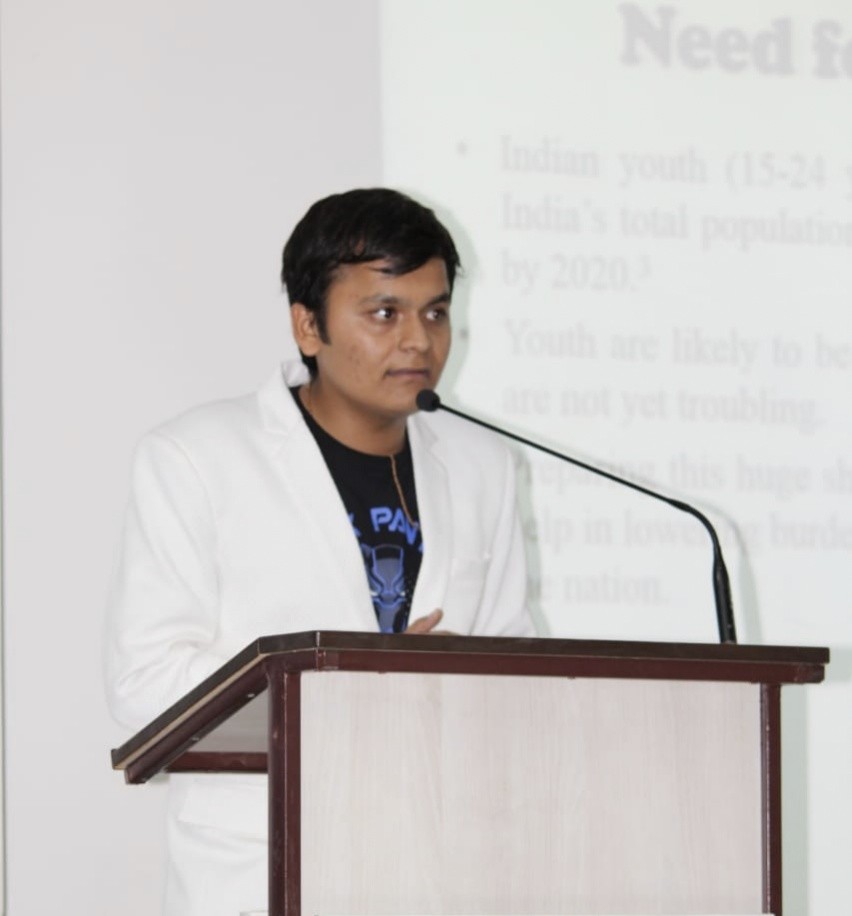
Title: Public Health & Geographic Information System
Invited Presentation
Dr Pranav Kshtriya
Symbiosis international University, India
Abstract
A geographical information system (GIS) is defined as ‘a computer-based system for collecting, editing, integrating, visualizing and analysing spatially-referenced data’. They contain the spatial dimensions of specific geographic areas. This allows for mapping and analysis of spatial information to occur and be applied in business, market research, government, etc. GIS could be described as smart maps that offer a simulation of the real world to their users. They can also generate interactive spatial or descriptive questions (research that has been created by the user), analyze spatial data, adapt and adopt them in analogue (prints maps and diagrams) or digital media (records of spatial data, interactive maps on the Internet). Health GISs are integrated systems containing tools for managing, inquiring, analysing and presenting spatially-referenced health data. The spatial perspective can be of particular importance because the spatial patterns of distribution of diseases,both infectious and noninfectious, help us understand the dynamics of transmission and spatial determinants of the diseases.The use of geospatial technologies and spatiotemporal epidemiological tools is increasing around the world as a means to understand the dynamics of infectious disease transmission and noncommunicable disease distribution. GIS can contribute to public health in many ways like risk assessment models in relation to the contamination of drinking water, researches that focus on Hepatitis c and intravenous drug use can be helped with the aid of GIS, and provide information regarding the distribution of health services. Thus, any growing disparities might be eliminated. Also, policy-makers would make right decisions. Health professionals can easily identify the difficulties and disparities regarding the accessibility to health services; and so, they are able to cope with the current situation, surveillance, management and analysis of diseases. GIS seem to be important tools for analysis and visualization of epidemiological data. Public health services, diseases, and any information regarding health can be displayed on a map and correlated amongst many pieces of information such as environmental data, elements of health concern and social information. Using GIS converts street addresses and coordinates to a specific point on a map. Geographic information systems, or GIS, are increasingly being used to investigate diverse public health and medical problems. For example, environmental health researchers are using GIS to conduct risk analyses of the spatial diffusion of air and water pollutants. Epidemiologists are using GIS to investigate possible etiological risk factors of various acute and chronic diseases. Community health science researchers are using these systems to study the disparities in disease and mortality rates among various ethnic and racial groups. Emergency planning and management researchers are studying their anticipated responses to possible natural disasters and terrorist attacks at various geographic locations. Health administration researchers are analyzing the demographic, socioeconomic, and medical characteristics of individuals in hospital service areas to determine the optimal mix and location of new health centers, satellite, and mobile clinics. Use of GIS and spatial representation of various health issues make professionals arrive at conclusions in a faster and better way in the field of both public health and decision-making
Biography
Dr Pranav Kshtriya (PT) is postgraduate scholar public health student at Symbiosis institute of health sciences affiliated to Symbiosis International University India. I have secured first Rank in my first semester & I am a scholarship holder too which is granted by my university. I have background of a Physiotherapist with excellent academic record. I have completed 2 Research Project during my bachelors & Internship. With a strong Research background of 6 research Paper presentation in various national & International Conference scheduled in All India Institute of Medical Sciences, New Delhi & many more. Recently got Second Runner Trophy for Junior Research Paper Presentation in National Conference held in Bihar. In terms of award and achievement I have got first & second Position & trophy in National & State level Conference quiz competition & felicitated 3 Times by CHARUSAT UNIVERSITY for my successful contribution in Research & Academics. With these achievements in Research, I want to work in Successful Integration Cost-effective Geo-informatic system in Public Health with Indian Public & Private HealthCare System I have also won various trophies in Cultural competition like First Position in Mime competition, Skit Competition & many more so also I am stage performer & participated in dance competition too.

Title: The power of sport to motivate, educate and inspire people in local communities to improve their life chances, physical health, and mental well-being, through 45 unique projects.
Keynote Presentation
Michael Salla
Director of Health and Sport at Everton in the Community, North-East England
Abstract
Everton in the Community is one of the UK's top sporting charities and firmly established on the world stage of community sports development. As the Blues' official charity it is considered one of the Premier League’s leading community schemes due to the quality and reach of its various programmes.
Since 1988, Everton in the Community has been at the forefront of social intervention across Merseyside, not afraid to tackle issues which others shied away from. A recent societal report found that for every £1 invested into Everton in the Community produces £14.74 in return.
Through its 240+ dedicated full-time staff and 160+ volunteers, the charity offers more than 40 programmes covering a range of social issues including health, employability, anti-social behaviour, crime, education, dementia, poverty, youth engagement, youth justice and disability.
Operating seven days a week, 365 days a year, Everton in the Community supports the most vulnerable and underprivileged members of local communities, and the charity aims to instil confidence in others by creating life-changing opportunities. Thousands of people have already benefited from the magnificent work they do.
The charity's work is vast and includes providing routes into education, training and employment, steering young people away from crime and anti-social behaviour and engaging children and adults, regardless of ability, in physical activity. In addition to helping individuals, Everton in the Community helps other charitable groups improve the lives of local people.
In 2013, Everton in the Community launched a unique and innovative partnership with Edge Hill University. The focus of the academic partnership was to enhance the monitoring and evaluation of the community-based programmes delivered by Everton in the Community. Furthermore, the partnership played a key role in securing new funding to develop new programmes informed by the evaluation of the existing programmes. It is almost a decade since the partnership was created and during this time many prestigious awards have been secured in recognition of cross-sector collaboration, evidencing impact and co-designing and co-delivering programmes.
Biography
Michael is the Director of Health and Sport at Everton in the Community, the official charity of Everton Football Club. Michael leads a team to deliver a range of community-based programmes to tackle health inequalities and improve health outcomes across some of the most deprived communities in the Liverpool City Region in North-West England. Reaching 20,000 people each year, who are at-risk of premature mortality and a poorer quality of life, Michael’s work provides life-course provision supporting various population groups including those living with dementia, cancer, diabetes, obesity and other non-communicable diseases. Michael’s work has shown to generate £14.74 of societal value for every £1 invested. Separate to Michael’s role at Everton in the Community, he is a Trustee at Liverpool Charity and Voluntary Services (LCVS), which has a focus on supporting the voluntary sector and making improvements in the areas of health, education and employment.

Title: The power of sport to motivate, educate and inspire people in local communities to improve their life chances, physical health, and mental well-being, through 45 unique projects.
Keynote Presentation.
Prof. Andy Smith
Professor of Sport and Physical Activity at Edge Hill University, UK.
Abstract
Everton in the Community is one of the UK's top sporting charities and firmly established on the world stage of community sports development. As the Blues' official charity it is considered one of the Premier League’s leading community schemes due to the quality and reach of its various programmes.
Since 1988, Everton in the Community has been at the forefront of social intervention across Merseyside, not afraid to tackle issues which others shied away from. A recent societal report found that for every £1 invested into Everton in the Community produces £14.74 in return.
Through its 240+ dedicated full-time staff and 160+ volunteers, the charity offers more than 40 programmes covering a range of social issues including health, employability, anti-social behaviour, crime, education, dementia, poverty, youth engagement, youth justice and disability.
Operating seven days a week, 365 days a year, Everton in the Community supports the most vulnerable and underprivileged members of local communities, and the charity aims to instil confidence in others by creating life-changing opportunities. Thousands of people have already benefited from the magnificent work they do.
The charity's work is vast and includes providing routes into education, training and employment, steering young people away from crime and anti-social behaviour and engaging children and adults, regardless of ability, in physical activity. In addition to helping individuals, Everton in the Community helps other charitable groups improve the lives of local people.
In 2013, Everton in the Community launched a unique and innovative partnership with Edge Hill University. The focus of the academic partnership was to enhance the monitoring and evaluation of the community-based programmes delivered by Everton in the Community. Furthermore, the partnership played a key role in securing new funding to develop new programmes informed by the evaluation of the existing programmes. It is almost a decade since the partnership was created and during this time many prestigious awards have been secured in recognition of cross-sector collaboration, evidencing impact and co-designing and co-delivering programmes.
Biography
Andy Smith is Professor of Sport and Physical Activity at Edge Hill University, Lancashire, UK. He has worked with Everton in the Community for over eight years, including on the award-winning Tackling the Blues programme which was cited as a model of good practice in the 2017 UK Health Select Committee Suicide Prevention report. His research focuses on developing mental health awareness and literacy (alongside suicide prevention) in children and young people, schools and local communities, as well as in professional sport. Andy contributed to the government’s independent Duty of Care in Sport review, works with a range of sports organisations on mental health and suicide prevention, and led the UK’s first research project into mental health in the sport and physical activity workforce.

Title: The power of sport to motivate, educate and inspire people in local communities to improve their life chances, physical health, and mental well-being, through 45 unique projects.
Keynote Presentation
Dr Christopher Pritchard
GP at Sunlight Group Practice, Wirral, North West England.
Abstract
Everton in the Community is one of the UK's top sporting charities and firmly established on the world stage of community sports development. As the Blues' official charity it is considered one of the Premier League’s leading community schemes due to the quality and reach of its various programmes.
Since 1988, Everton in the Community has been at the forefront of social intervention across Merseyside, not afraid to tackle issues which others shied away from. A recent societal report found that for every £1 invested into Everton in the Community produces £14.74 in return.
Through its 240+ dedicated full-time staff and 160+ volunteers, the charity offers more than 40 programmes covering a range of social issues including health, employability, anti-social behaviour, crime, education, dementia, poverty, youth engagement, youth justice and disability.
Operating seven days a week, 365 days a year, Everton in the Community supports the most vulnerable and underprivileged members of local communities, and the charity aims to instil confidence in others by creating life-changing opportunities. Thousands of people have already benefited from the magnificent work they do.
The charity's work is vast and includes providing routes into education, training and employment, steering young people away from crime and anti-social behaviour and engaging children and adults, regardless of ability, in physical activity. In addition to helping individuals, Everton in the Community helps other charitable groups improve the lives of local people.
In 2013, Everton in the Community launched a unique and innovative partnership with Edge Hill University. The focus of the academic partnership was to enhance the monitoring and evaluation of the community-based programmes delivered by Everton in the Community. Furthermore, the partnership played a key role in securing new funding to develop new programmes informed by the evaluation of the existing programmes. It is almost a decade since the partnership was created and during this time many prestigious awards have been secured in recognition of cross-sector collaboration, evidencing impact and co-designing and co-delivering programmes.
Biography
Dr. Christopher Pritchard is a GP at Sunlight Group Practice, Wirral. He has worked with Everton in the Community since 2019 as part of a ground breaking initiative which was the first of its kind in the country to have a GP working as part of a Premier League Football Club’s Foundation. Dr Pritchard is now supervising further doctors as part of their GP training who are working with the charity. This enables the existing physical and mental health programmes to have an additional layer of support. Dr Pritchard graduated with a degree in medicine from the University of Liverpool and had previously undertaken a degree in Applied Biochemistry. Dr Pritchard had previously established the first sports medicine society and national conference during his undergraduate training. He now is the mental health lead for his local federation and primary care network. He is the clinical lead for the first primary care ADHD led service in the country. Dr Pritchard is also a GP trainer and appraiser.

Title: Patient safety in the process of pharmacotherapy - risk factors and human factors as predictors of drug errors
Keynote Presentation
Dr. Lukasz Rypicz
Wroclaw Medical University Poland
Abstract
Errors related to pharmacotherapy are among the most common medical errors in the healthcare system and constitute from 10 to 18% of all medical errors. These errors can have serious consequences to the detriment of the patient and even his death. The pharmacotherapy process is burdened with a high risk of an adverse event, and nurses play a key role in this process. Usually, errors occur most often at the last stage of this process; therefore, it is the final stages and their leaders, i.e., nurses and midwives, who are at the highest risk
Own research on the analysis of ergonomic factors triggering the risk in the pharmacotherapy process showed that nurses recognised the following factors with a very high risk in the pharmacotherapy process: unreadable medical orders, poor communication between the physician and nurse or time pressure during nurse duties.
Biography
Łukasz Rypicz, MSc., PhD - assistant at the Department of Economics and Quality in Health Care, the main medical data analyst at the University Clinical Hospital. The main areas of interest are ergonomics and quality and risk management in the health care system and patient safety. Co-author of numerous publications in the field of ergonomics and patient safety. Scientific co-editor of the monograph entitled “Safety of the patient and medical personnel - ergonomic conditions”.
+91 9491 456 452
Door No.200, Immidhihalli Main Road, Whitefield-560066, Bangalore, India
About Us
Global Scientific Guild organizes conferences and webinars to promote quality research and real world impact in an atmosphere of true international co-operation between scientists, doctors, professors, practitioners, engineers and industry by bringing together the world class renowned personalities to discuss the latest developments and innovations at one common platform.